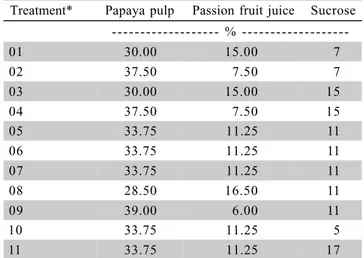SENSORY ACCEPTANCE OF MIXED NECTAR OF PAPAYA, PASSION FRUIT AND ACEROLA
Texto
Imagem


Documentos relacionados
The probability of attending school four our group of interest in this region increased by 6.5 percentage points after the expansion of the Bolsa Família program in 2007 and
As doenças mais frequentes com localização na cabeça dos coelhos são a doença dentária adquirida, os abcessos dentários mandibulares ou maxilares, a otite interna e o empiema da
Thus, the objective of the present work was to isolate and characterize the phenolic compounds present in acerola and to estimate the amount of anthocyanin pigments found in the
The sorption isotherm of acerola pulp powder obtained through lyophilization (Figure 1) allows noting that there is an increase in a w with the increment in equilibrium moisture
The use of defatted açaí pulp as a raw material resulted in açaí and cupuaçu nectars with good sensory acceptance, but with lower acceptance than the full-fat nectar in terms
In this way, this study was undertaken to evaluate the effect of three pasteurization temperatures on the sensory stability of sugarcane juice acidified with passion fruit pulp
coccigera induces less vigor to the plants, possibly due to the smaller development of its root system and, under cultivation in pots, this rootstock induced earliness of
We also determined the critical strain rate (CSR), understood as the tangent of the inclination angle between the tangent to the crack development curve and the crack development